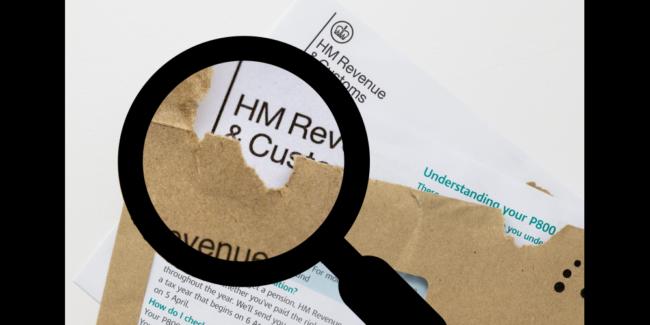How to Spot a Scam HMRC Letter

Posted on November 29, 2024 by Kayleigh Wilkinson
Scams are becoming increasingly sophisticated, and it’s crucial to stay vigilant. Whilst people’s knowledge is increasing around email scams there are also scams which use traditional mail posted through your letterbox.
Staying vigilant is crucial to protect yourself from fraud. Falling victim to a scam can lead to financial loss and identity theft. By being cautious and verifying the authenticity of letters, you can safeguard your personal information and finances.
A current example of scam letters is communications seemingly from HM Revenue and Customs (HMRC). Scammers exploit the vulnerability people feel when they receive an unexpected brown envelope with the letter HMRC printed on the front. By posing as HMRC the scammers are aiming to steal personal information or money.
Here’s some tips to help you spot a scam HMRC letter and the steps you can take to keep yourself and your money safe:
1. Check the Sender’s Details – Legitimate HMRC letters will always come from a recognisable address which can be checked on their website.
2. Look for Official Logos and Formatting – HMRC letters will have official logos and consistent formatting. Scammers often use poor-quality logos or incorrect formatting. Compare the letter with previous legitimate correspondence from HMRC if you’re unsure.
3. Verify the Contact Information – Scam letters often include fake contact details. Always verify the phone numbers and email addresses provided by cross-referencing them with the official HMRC website. NEVER use the contact details provided in the suspicious letter.
4. Be Wary of Urgent Language and Threats – Scammers often use urgent language or threats to create panic and prompt immediate action. Phrases like “urgent action required” or threats of legal action without having received previous letters are red flags.
5. Look for Spelling and Grammar Mistakes – Scam letters often contain spelling and grammar mistakes. HMRC communications are professionally written and free from such errors.
What to Do If You Suspect a Scam
If you receive a suspicious letter, do not respond or provide any personal information. Report the letter to HMRC and seek advice on the next steps. You can contact HMRC directly through their official website or helpline.
For official Government advice on fraudulent letters visit this HMRC webpage.
Training and Education
Socialising scam techniques and awareness is vitally important and should be part of your regular training in your organisation. If you would like further advice or need to discuss what training options are available to you, please speak to your ramsac relationship manager or visit www.ramsac.com/cybersecurity







